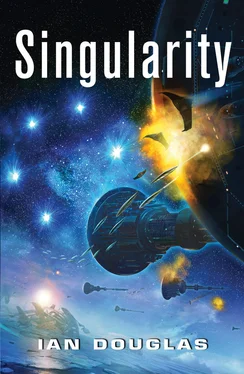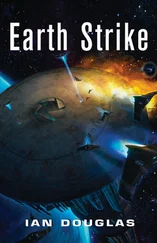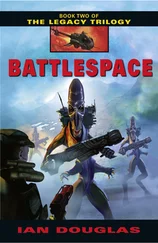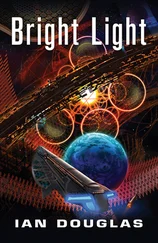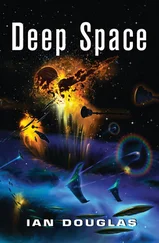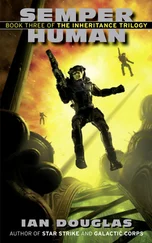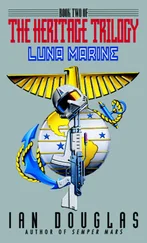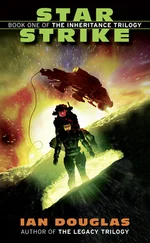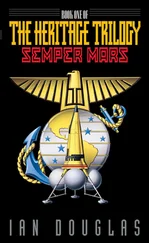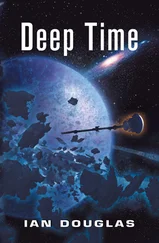Outer System, Texaghu Resch System
112 light years from Earth
1103 hours, TFT
Emergence .
The star carrier America dropped into normal space as her Alcubierre bubble collapsed. Since she’d been motionless relative to the volume of space wrapped up inside the Alcubierre field, she emerged traveling at a velocity of only a few kilometers per second—the difference in relative velocities between this patch of space, and the space within the Kuiper Belt of HD 157950. The transition released a great deal of potential energy as light and hard radiation, a flaring burst spreading into and through the new star system at the speed of light.
Koenig studied the new system, both represented by icons within the tactical tank, and as revealed by optical sensors across the bulkhead viewalls of the Combat Information Center. They’d emerged ten astronomical units from the local star—a little farther than Saturn was from Sol. There were planets—five visible immediately, and there likely would be others as the ship’s navigational AIs scanned local space.
“Admiral?” a familiar voice asked. “This is CAG. So you still want to launch fighters?”
“Wait one,” Koenig told him. “We need to see what we’re launching to .”
Data continued to cascade in from the AIs scanning the system. Two inner rocky planets, small enough and close enough to their primary that they likely were too hot for Earth-type life. Planet III, 1.5 AUs from the star, was a small gas giant, about the size of Neptune. Beyond that, at 3 and 5 AUs, were two more rocky planets, both dazzlingly bright and probably encased pole to pole in planet-wide sheets of ice.
“Astrogation,” Koenig called. “Give that gas giant a close look. Maybe it has Earthlike moons.”
He was thinking of Alchameth, circling the star Arcturus, and its moon Jasper.
“We’ve been looking, Admiral. We’ve spotted several small moons—rocks, really—but nothing like a real planet.”
“Carry on, then.”
He felt a small bite of disappointment. Because of this system’s listing in the Turusch Directory, he’d assumed there would be an inhabited planet here—if not one with an oxygen-nitrogen atmosphere and temperate climes comfortable for humans, then one with the reducing atmosphere and hot, sulfur-laden conditions enjoyed by the Turusch.
The truth of the matter, though, was that habitable worlds of either type were painfully few and far between within that sliver of the galaxy explored so far by Humankind. The chances that a world of near-Earth mass would just happen to lie within the band of liquid-water temperatures around a star were slim; the fact that the Confederation had discovered as many as twenty where humans could walk unprotected—Chiron and Circe and Osiris and the others—spoke more to how many stars were out here, not to how common other Earths might be.
Texaghu Resch was a G2-type star almost identical to Sol … but it simply hadn’t won the planetological crapshoot that would have led to its possessing a planet humans could call home.
Something was flashing red in the tactical tank. Koenig looked … then blinked. There was something there. America ’s instrumentation was picking up a gravitational anomaly. In essence, the ship was feeling about twice the force of gravity it should be feeling at this distance from a G-class star. It was exactly as though there were two stars in there—a close binary—each of about one solar mass … but one of the stars was invisible.
Either that, or the single visible star was twice as massive as it should be, and that simply wasn’t possible, not within the rules governing stellar classification as humans now understood them.
“Admiral?” another voice said. “This is Lieutenant Del Rey, in Astrogation.”
“Go ahead.”
“Have you seen the GA alert, sir?”
“Yes, I have. What do you make of it?”
“We didn’t know what the hell it was at first. We still don’t. But … take a look at this, sir.”
A visual feed came through, opening as a new window within Koenig’s in-head display. It appeared to be a highly magnified image of a portion of the star itself, with the light drastically stepped down by the AI controlling it. Koenig could see the curving limb of the star, the mottling of the surface granulation, the sweep and arch of stellar prominences. At first, he saw nothing out of the ordinary.
And then …
“Good God!” he said, expanding the image for a closer look. “What the hell is that?”
“We have no idea, sir,” Del Rey replied. “But we thought it might be important.”
And that, Koenig thought, was a hell of an understatement.
29 June 2405
VFA-44
Outer System, Texaghu Resch System
112 light years from Earth
1106 hours, TFT
“PriFly, this is Dragon One,” Gray called. “What’s the hang-up?” They were supposed to have dropped two minutes before, but Primary Flight Control had called for a hold.
“Wait one, Dragon One,” a voice replied—one of the traffic control personnel in PriFly. “There’s been a hitch. The Space Boss is talking to the admiral now.”
The “Space Boss” was Commander Avery, America ’s primary flight controller.
Gray scowled. His cockpit was projecting a view of surrounding space, overlaid with icons representing the ships of CBG-18 as they continued to emerge from metaspace. A dozen Confederation vessels were out there, now, with more popping in every moment as the light from their Emergence reached the America ’s sensors.
There were no icons representing enemy or unknown vessels. It appeared that this system might be clean.
Possibly the drop was going to be scrubbed.
Well, that was the battle cry of the Navy: hurry up and wait .
“Dragonfire Squadron, this is PriFly,” Commander Avery said. “The drop is scrubbed. Repeat, the drop is scrubbed. VFA-51 will remain on Ready Five. All others will stand down.”
VFA-51, the Black Lightnings, was one of the Dragonfires’ sister Starhawk squadrons on board the America . Commander Alton Crane was their new skipper, and like the Dragonfires, they’d taken heavy losses at Alphekka, and a good half of the pilots were newbies.
Gray felt a jolt as his Starhawk began rising within its magnetic cradle. A moment later, it passed through the drop-tube vacuum seal, allotropic composites within a nanomatrix that made solid metal flow like a thick, viscous liquid, allowing the fighter to be drawn into the carrier’s flight deck while maintaining the compartment’s atmospheric pressure. His cockpit melted open and swung away as a rating outside triggered steps that grew out of the deck.
“Short flight, huh?” the guy said, grinning.
“The best kind,” Gray replied with considerable feeling. “Uneventful.”
An hour later, Gray entered the crew’s lounge, located at the third-G level of America ’s number-two hab-module stack. The compartment was large and furnished more like a civilian social center Earthside, with numerous entertainment pits, food bars, and low couches grown from the deck and turned soft. The overhead was an enormous dome, and at the moment, it was displaying the view outside. The local star, yellow, bright, and showing a tiny disk, gleamed halfway up the gently curving bulkhead.
Shay Ryan spotted him and walked over. “Hey, Skipper,” she called. “Looks like they don’t want us here, either.”
Like Gray, Ryan was a Prim, formerly of the Periphery areas that once had been Washington, D.C., until rising sea levels had reclaimed the lowland areas as a ruin-littered salt marsh. Like Gray, she’d joined the service because she’d had few decent options. Like him, she mistrusted both government authority and technology, but she’d tested well on her inborn spatial and coordination skills, and they’d made her a fighter pilot.
Читать дальше
